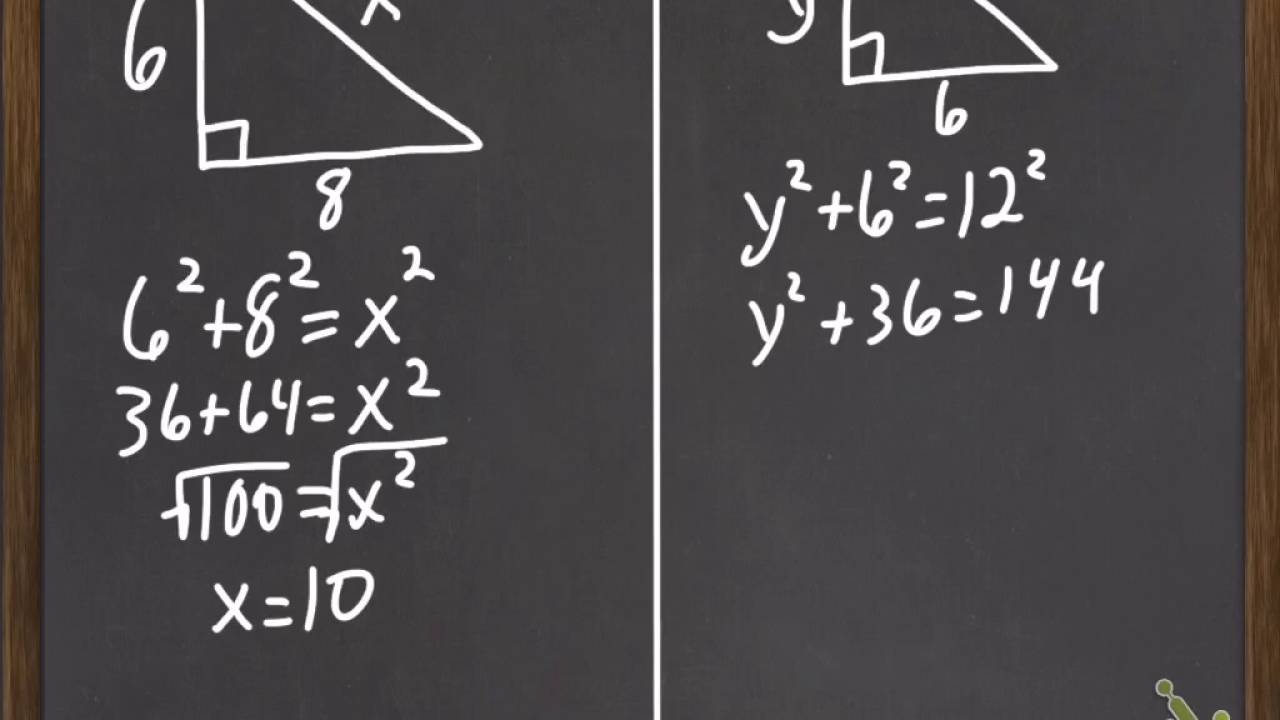
Exploring the Pythagorean Theorem and Its Converse
Interactive Video
•
Mathematics
•
6th - 10th Grade
•
Practice Problem
•
Easy
Standards-aligned
Jackson Turner
Used 5+ times
FREE Resource
Standards-aligned
Read more
10 questions
Show all answers
1.
MULTIPLE CHOICE QUESTION
30 sec • 1 pt
What is the formula of the Pythagorean theorem?
A^2 - B^2 = C^2
A + B + C = 180
A^2 + B^2 = C^2
A^2 + B^2 = C
Tags
CCSS.8.G.B.8
2.
MULTIPLE CHOICE QUESTION
30 sec • 1 pt
Which sides of the triangle does the Pythagorean theorem apply to?
Any two sides
The two legs and the hypotenuse
The two shortest sides
The two longest sides
Tags
CCSS.8.G.B.8
3.
MULTIPLE CHOICE QUESTION
30 sec • 1 pt
In the Pythagorean theorem, which side is represented by 'C'?
The hypotenuse
The longest leg
The shortest leg
Any side
Tags
CCSS.8.G.B.8
4.
MULTIPLE CHOICE QUESTION
30 sec • 1 pt
How do you find the hypotenuse when given the legs of a right triangle?
Divide the sum of the legs by 2
Multiply the legs and take the square root
Add the squares of the legs and take the square root
Subtract the squares of the legs
Tags
CCSS.8.G.B.8
5.
MULTIPLE CHOICE QUESTION
30 sec • 1 pt
Which of the following is a correct application of the Pythagorean theorem?
6^2 - 8^2 = X to find X
6^2 + 8 = X^2 to find X
6 + 8 = X^2 to find X
6^2 + 8^2 = X^2 to find X
Tags
CCSS.8.G.B.8
6.
MULTIPLE CHOICE QUESTION
30 sec • 1 pt
What is the first step in simplifying the square root of 108 to find a leg in a right triangle?
Divide by 2
Divide by 3
Take the square root directly
Multiply by 2
7.
MULTIPLE CHOICE QUESTION
30 sec • 1 pt
What does it mean if A^2 + B^2 > C^2 in the context of the converse of the Pythagorean theorem?
The triangle is right
The triangle is equilateral
The triangle is acute
The triangle is obtuse
Tags
CCSS.8.G.B.8
Create a free account and access millions of resources
Create resources
Host any resource
Get auto-graded reports

Continue with Google

Continue with Email

Continue with Classlink

Continue with Clever
or continue with

Microsoft
%20(1).png)
Apple
Others
Already have an account?
Similar Resources on Wayground
Popular Resources on Wayground

5 questions
This is not a...winter edition (Drawing game)
Quiz
•
1st - 5th Grade

15 questions
4:3 Model Multiplication of Decimals by Whole Numbers
Quiz
•
5th Grade

25 questions
Multiplication Facts
Quiz
•
5th Grade

10 questions
The Best Christmas Pageant Ever Chapters 1 & 2
Quiz
•
4th Grade

12 questions
Unit 4 Review Day
Quiz
•
3rd Grade

10 questions
Identify Iconic Christmas Movie Scenes
Interactive video
•
6th - 10th Grade

20 questions
Christmas Trivia
Quiz
•
6th - 8th Grade

18 questions
Kids Christmas Trivia
Quiz
•
KG - 5th Grade
Discover more resources for Mathematics

10 questions
Identify Iconic Christmas Movie Scenes
Interactive video
•
6th - 10th Grade

15 questions
Solving Equations with Variables on Both Sides Review
Quiz
•
8th Grade

15 questions
scatter plots and trend lines
Quiz
•
8th Grade

21 questions
Convert Fractions, Decimals, and Percents
Quiz
•
6th Grade

20 questions
Solving Systems of Equations by Graphing
Quiz
•
8th Grade

20 questions
Exponents
Quiz
•
6th Grade

20 questions
One step Equations
Quiz
•
6th Grade

15 questions
Christmas Movie Trivia
Quiz
•
7th Grade